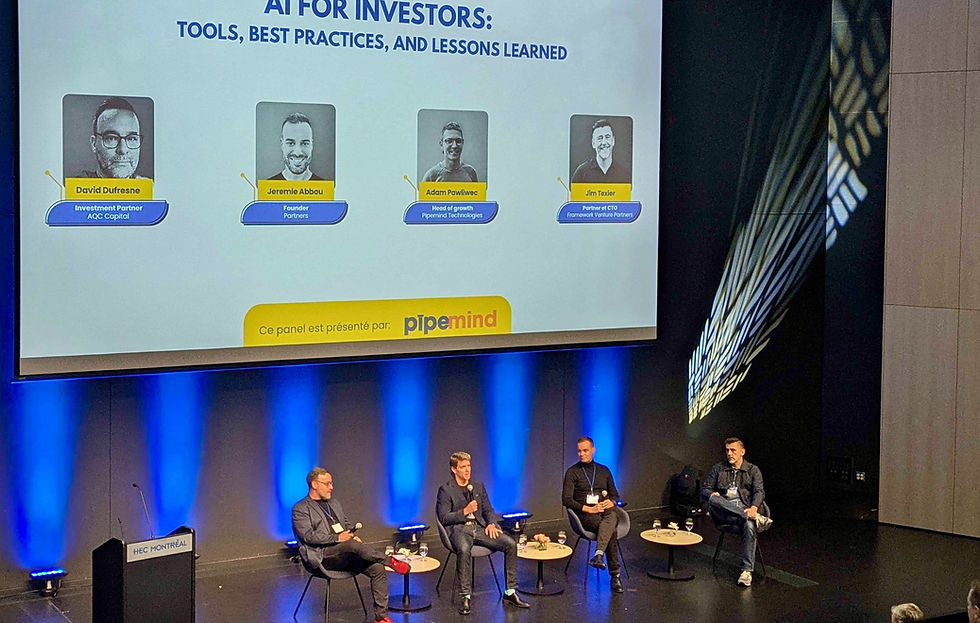Business Use-case: Is Machine Learning or AI better for Predicting?
- Adam Pawliwec

- May 29, 2024
- 3 min read

Recently, I’ve heard people say things like, “Machine Learning is better than AI for that” or ask, “Do we need AI for that, or will Machine Learning be better?” In this article, we will distinguish the difference between Machine Learning (ML) and Artificial Intelligence (AI), identify when you should use which, and then provide an example of using both in conjunction with one another to make predictions using image data, an available skill for risk assessment in many industries.
NOTE: To avoid bothering certain individuals, let me clarify that Machine Learning is technically a subset of artificial intelligence and was once indistinguishable from it. However, today, most investments are directed toward Natural Language Processing (NLP), such as Large Language Models (LLMs), which have hijacked the media. So, In everyday conversations, when people use the term AI, they usually and unknowingly refer to generative AI, such as LLMs (like ChatGPT). So moving forward we will use the correct terms comparing LLMs to ML.
Machine Learning vs Large Language Models
ML is a subset of AI that operates on pre-defined rules. It is particularly adept at performing mathematical tasks such as data analysis, pattern recognition and predictive modelling. ML is most effective in processing numerical and categorical data, and it performs well in classification tasks that involve recognizing patterns.
LLMs are AI models that have been trained on enormous amounts of text data. They are great at condensing and explaining complex information, and are particularly useful for tasks that require natural language understanding and generation, such as generating human-like text, content creation, summarization, translation, and question-answering.
As already mentioned ML is rule-based, and it attempts to always try and find a better way to get an answer to a question. Whereas LLMs are trying to find a better way to ask questions and answer any question. For example, when analyzing an image an LLM is good at analyzing a single image where it knows the question and you can validate it’s understanding. Whereas, ML is able to analyze tons of images given the rules that were built into the ML model. Another way to think about it, is ML is a specialist and LLMs are a generalist.
For now, ML is better at these numerical, mathematical, predictive and categorical tasks on a large set of data. However, give the sheir amount of capital investment going into generative AI, we predict LLM will advance to the point where it replaces most tasks currently done by ML models. However, there likely will still be a place for advance tasks to be done by ML.
WARNING, we don’t mean to confuse you, but we say this all to say that LLMs are build using ML models, and business can even fine-tune existing LLMs using ML to solve specific business tasks, which you can read about here.
Image data analysis use case: Using ML and LLMs together to build a predictive solution.
If a business wants to develop an interactive tool that predicts outcomes using image data, then they can combine ML and LLMs to maximize the strengths of both technologies.
Firstly, they can use ML models for bulk analysis of image data. These models can identify patterns, classify images, and detect anomalies with ease. ML models can process and analyze thousands of images efficiently, providing valuable insights into trends and features.
Secondly, they can integrate an LLM to interact with users. The LLM can explain the findings of the ML model in natural language and answer any follow-up questions. The LLM can also summarize the results and offer insights in an easily understandable format, improving user experience.
Lastly, businesses can apply ML techniques to fine-tune the LLM based on user feedback. This will improve its responses and make the tool more effective over time.
By combining the analytical capabilities of ML models with the language understanding and generation of LLMs, businesses can create powerful tools that not only analyze image data at scale but also provide actionable insights in a user-friendly manner. This approach offers a comprehensive solution to meet specific business needs.
In conclusion, even though ML and LLMs are both AI, they have distinct capabilities which are important to understand when thinking about innovative ways to impact your business. For a summary comparing ML and LLMs please visit table 1 below. Pipemind is here to help you in all your AI endeavours so please feel free to reach out to learn how AI can transform your business.
Table 1: summary of Machine Learning & Large Language Models (LLM)




Comments